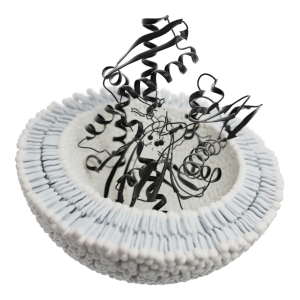
Comparison of mRNA and microRNA yield and recovery from EXO-NET isolated EVs with 4 other EV isolation kits.
Method: EVs were isolated from pooled normal human plasma by EXO-NET and other 4 commercial kits according to their manufacturers’ instructions. Isolated EVs were lysed and total RNA was extracted for qPCR analysis to measure both microRNAs (miR-16, let-7a and miR-21) and mRNAs (GAPDH, OAZ1, RPLPO and SERF2).
Result: EXO-NET delivers equivalent or higher recovery of plasma EV RNA (mRNAs and microRNAs) compared to the other 4 commercial EV isolation kits as indicated by a lower CT value
Method: Pooled normal human plasma (500µl) was incubated with 30 µl of EXO-NET for 15 min. EXO-NET-captured EVs were magnetically isolated and lysed for downstream analysis. Total EV protein and RNA were extracted and analysed by Western blot and qPCR.
Result: Western blot analysis showed EXO-NET-isolated EVs from normal human plasma were positive for CD63, CD81, CD9, TSG101 and Flotillin-1, and negative for calnexin (an EV negative marker). qPCR analysis demonstrated that EXO-NET isolated EVs had high yield of mRNA (GAPDH) and microRNA (miR-191).
Method: Pooled normal human saliva (400µl) was diluted with 400µl of PBS and then incubated with 30 µl of EXO-NET for 15 min. EXO-NET captured EVs were magnetically isolated and lysed for downstream analysis. Total protein and RNA were extracted from captured EVs and analyzed by Western blot and qPCR.
Result: Western blot analysis confirmed the presence of CD63, CD81 and CD9. Calnexin (EVs negative marker) was not detectable. qPCR analysis confirmed that EXO-NET isolated EVs had a high yield of mRNA (GAPDH) and microRNA (U6).
Method: EVs were isolated from pooled normal human plasma by EXO-NET and Kit A according to manufacturers’ instructions. Isolated EVs were lysed and extracted total protein were processed for proteomic analysis by tandem mass spectrometry.
Result: Mass spectrometry analysis showed that albumin peptide intensity in Kit A was 2-fold higher than that observed for EXO-NET isolated EVs. EXO-NET reduces contamination of EV preparations by serum proteins that may confound downstream analysis. The EV peptides intensity in Kit A was 6 to 10-fold less than that observed for EXO-NET-isolated EVs.